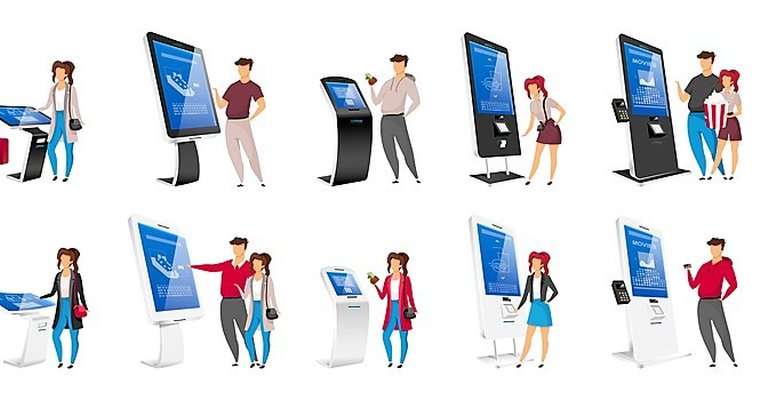Research indicates interactive kiosks will continue to post rapid growth through 2027 as consumers worldwide embrace self service in many environments.
An interactive kiosk can be defined as a self-service device arrayed in a public setting in order to help users correspond to relevant digital information and content through highly convenient interface.
From bill payment to retail to tourism and wayfinding, use of interactive kiosks has now become highly popular. Even in the healthcare industry, interactive kiosks have started becoming a preferred choice by hospitals and medical centers, since these computer terminals aid in obtaining personal information from the users quickly.
Queuing remains a major hassle for many consumers in a variety of environments, where they are compelled to stand and wait while others take their turns to perform certain necessary activities. This is where self-service solutions work as time savers.
Thoroughly customizable in nature, interactive kiosks act as remote representatives of organizations, replacing an array of services that have historically been carried out manually.
Self-service kiosks ride the consumer trend
With most businesses now choosing to operate online, consumers nowadays seek convenient technology for transactions. By offering customers the option to utilize an interactive touchscreen in your venture, you are enabling them to enjoy the current practices, thereby boosting the growth of your establishment.
Most importantly, interactive kiosks play a prominent role in helping a business save money by eliminating the necessity of hiring a customer service squad. This, in turn, allows the business to retain employees responsible for jobs that are essential to the operation. In a nutshell, self-service kiosks will operate as an alternative for an employee, freeing up money one could have otherwise expended on providing lucrative packages for employees.
Interactive kiosks are almost everywhere. Where airport authorities deploy them to print boarding passes for passengers, libraries resort to the technology to allow individuals to weigh up their own materials. Eateries, bistros and cafeterias, on the other hand, incorporate the systems to enable customers to place orders and pay bills easily. Also, shopping malls, hotels and banks have embraced the technology to streamline operations.
Research points to continued growth
According to Allied Market Research, the global interactive kiosk market is anticipated to register a significant combined annual growth rate through 2027. Especially when it comes to the retail sector, interactive kiosk technology plays a significant role in offering moving brand experiences in a hassle-free manner.
As this technology provides users with seamless services without any intervention of a human representative, consumers have become more inclined toward self-service systems, which have supplemented the market growth yet more. Also, advancements in touch enabled technologies have proven to be highly beneficial for the market growth.
North America leads the global trend
Vast adoption of touchscreen kiosks across several retail and government sectors in North America has worked as the major driver for the market growth in the province. The market across North America is also projected to retain the lion’s share of the growth to 2027.
Europe, on the other hand, contributed the second largest share and is anticipated to grow steadily throughout the period. The rise in demand for interactive kiosks in airports, railways stations, bus depots and shopping arcades has propelled the growth across the continent. Furthermore, the fact that the technology has also found application in the banking sector has been highly beneficial to the growth of the market in Europe.
The pandemic has had a mixed impact on the global market for interactive kiosks. The closure of airports and shopping malls affected the market growth during the initial phase of the lockdown, but the easing of restrictions benefited several sectors including retail, transportation and medical since interactive kiosks enable individuals to adhere to the mandatory social distancing norms.

